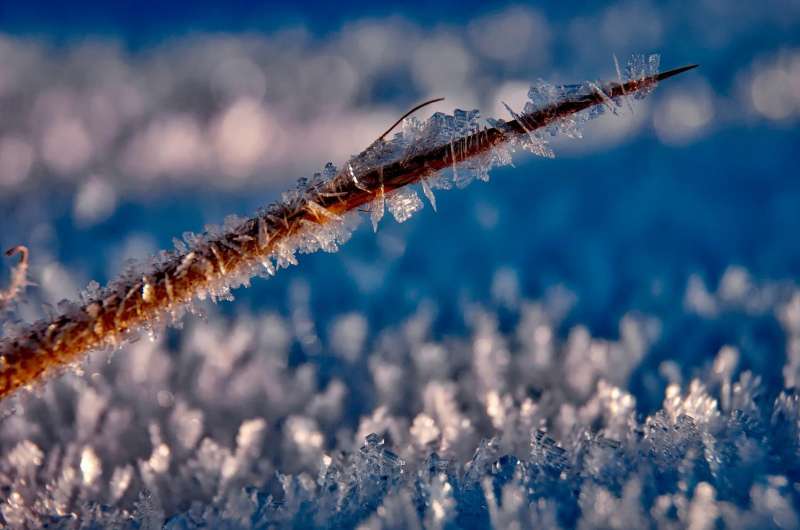This article has been reviewed according to Science X's editorial process and policies. Editors have highlighted the following attributes while ensuring the content's credibility:
fact-checked
trusted source
proofread
Researchers uncover protein responsible for cold sensation

University of Michigan researchers have identified the protein that enables mammals to sense cold, filling a long-standing knowledge gap in the field of sensory biology.
The findings, published in Nature Neuroscience, could help unravel how we sense and suffer from cold temperature in the winter, and why some patients experience cold differently under particular disease conditions.
"The field started uncovering these temperature sensors over 20 years ago, with the discovery of a heat-sensing protein called TRPV1," said neuroscientist Shawn Xu, a professor at the U-M Life Sciences Institute and a senior author of the new research.
"Various studies have found the proteins that sense hot, warm, even cool temperatures—but we've been unable to confirm what senses temperatures below about 60 degrees Fahrenheit."
In a 2019 study, researchers in Xu's lab discovered the first cold-sensing receptor protein in Caenorhabditis elegans, a species of millimeter-long worms that the lab studies as a model system for understanding sensory responses.
Because the gene that encodes the C. elegans protein is evolutionarily conserved across many species, including mice and humans, that finding provided a starting point for verifying the cold sensor in mammals: a protein called GluK2 (short for Glutamate ionotropic receptor kainate type subunit 2).
For this latest study, a team of researchers from the Life Sciences Institute and the U-M College of Literature, Science, and the Arts tested their hypothesis in mice that were missing the GluK2 gene, and thus could not produce any GluK2 proteins. Through a series of experiments to test the animals' behavioral reactions to temperature and other mechanical stimuli, the team found that the mice responded normally to hot, warm and cool temperatures, but showed no response to noxious cold.
GluK2 is primarily found on neurons in the brain, where it receives chemical signals to facilitate communication between neurons. But it is also expressed in sensory neurons in the peripheral nervous system (outside the brain and spinal cord).
"We now know that this protein serves a totally different function in the peripheral nervous system, processing temperature cues instead of chemical signals to sense cold," said Bo Duan, U-M associate professor of molecular, cellular, and developmental biology and co-senior author of the study.
While GluK2 is best known for its role in the brain, Xu speculates that this temperature-sensing role may have been one of the protein's original purposes. The GluK2 gene has relatives across the evolutionary tree, going all the way back to single-cell bacteria.
"A bacterium has no brain, so why would it evolve a way to receive chemical signals from other neurons? But it would have great need to sense its environment, and perhaps both temperature and chemicals," said Xu, who is also a professor of molecular and integrative physiology at the U-M Medical School.
"So I think temperature sensing may be an ancient function, at least for some of these glutamate receptors, that was eventually co-opted as organisms evolved more complex nervous systems."
In addition to filling a gap in the temperature-sensing puzzle, Xu believes the new finding could have implications for human health and well-being. Cancer patients receiving chemotherapy, for example, often experience painful reactions to cold.
"This discovery of GluK2 as a cold sensor in mammals opens new paths to better understand why humans experience painful reactions to cold, and even perhaps offers a potential therapeutic target for treating that pain in patients whose cold sensation is overstimulated," Xu said.
More information: The kainite receptor GluK2 mediates cold sensing in mice, Nature Neuroscience (2024). DOI: 10.1038/s41593-024-01585-8





















